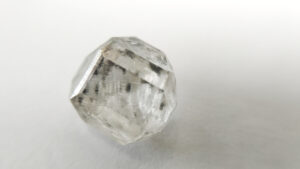
As the popularity and demand for lab-grown diamonds have increased much, a lot of people want to know about the difference between natural and synthetic/lab-grown stones. Even though both of these diamonds have the same physical as well as chemical properties, there are some other features that set them apart. Therefore, through this article, we address some of the important factors you have to know about mined and lab grown diamonds.
Each diamond is unique just like each person is unique. This is true for both lab-grown and natural/mined diamonds. Some people believe that it can be possible to identify between lab-grown and natural diamonds by looking at their sparkle or color. However, this might not be possible, as the optical characteristics of both mined and lab-grown stones are the same. They reflect and refract light rays in the same way, hence, the brilliance and sparkle of these diamonds can be the same.
Hence, identifying between lab-grown stones and natural diamonds just by looking at them may not be possible. Only an expert gemologist can identify both types of diamonds by examining them under a powerful microscope. Even gemological experts might not be able to differentiate between these two types of stones with their naked eyes.
The Structure Of Diamonds
The physical and chemical structures of both lab-grown and mined stones can be almost similar. However, there are certain minute structural differences between them that can be beneficial to set them apart.

One of the important features that can be used to differentiate between lab-grown and natural diamonds is inclusions.
When mined diamonds are formed naturally over billions of years under the earth, certain impurities can get trapped inside them thereby creating inclusions. The inclusions formed naturally can be different from that of the inclusions present in lab-grown diamonds that are formed over the span of a few weeks.
The inclusions in mined diamonds can appear like feathers, clouds, or pinpoints. But lab grown diamonds carry small flux-like or metallic inclusions.
These inclusions can affect the clarity of both mined and lab-grown stones in a similar way. The clarity grade in the diamond certificate can be helpful to determine the visibility of the inclusions in your diamond rings.
When buying diamonds, it is important to ensure that they have quality certificates. You can identify whether you are getting a lab-grown or natural stone from this certificate. This can be important, as lab-grown diamonds can be significantly less costly than natural ones.
